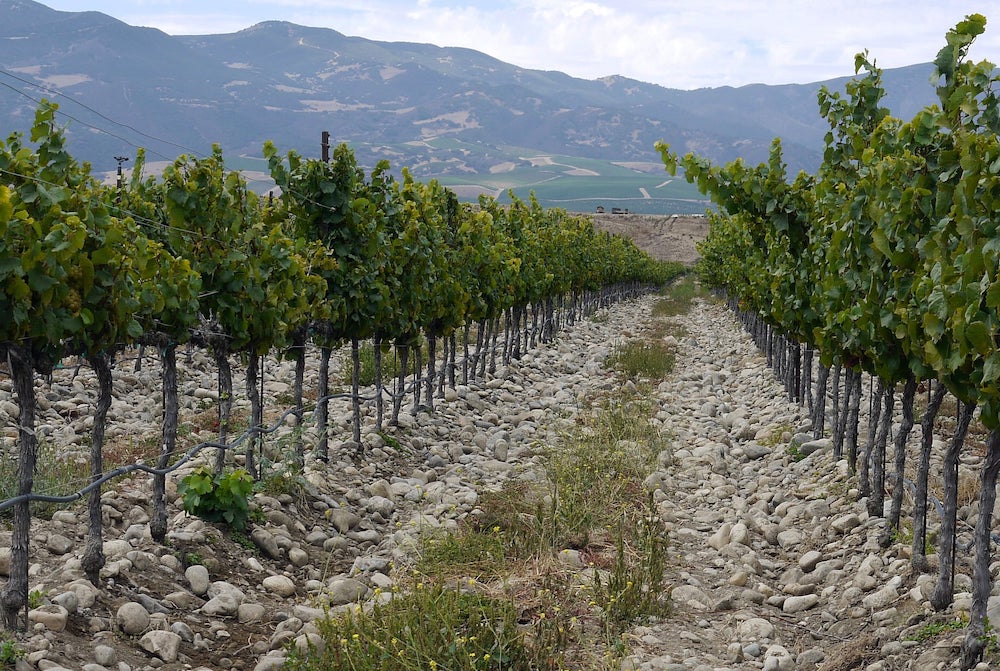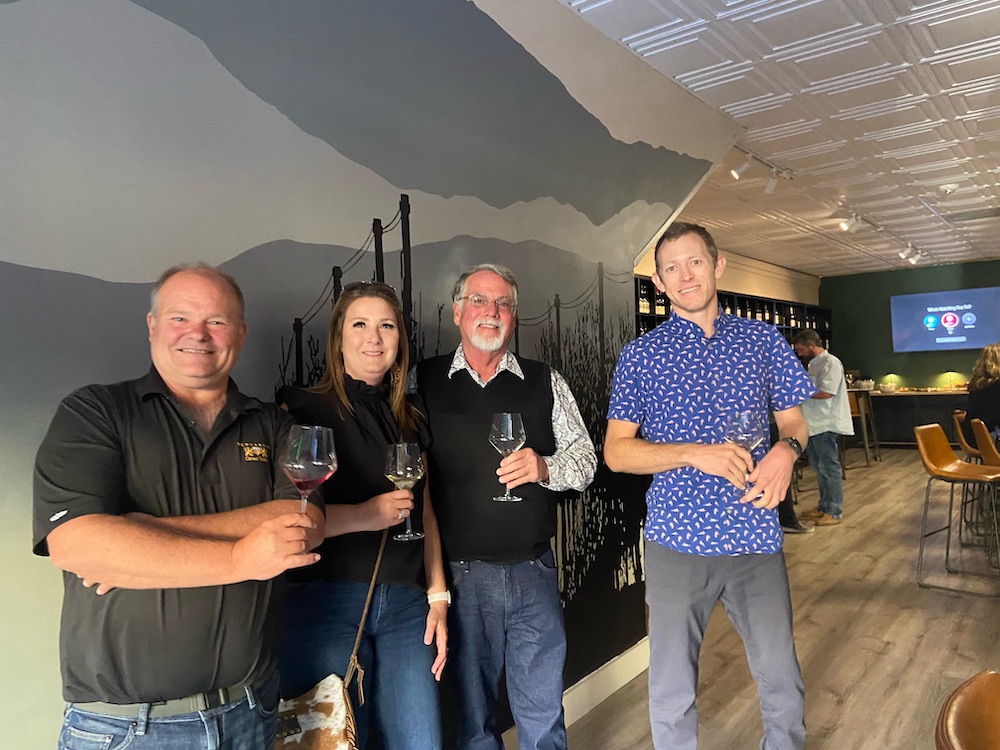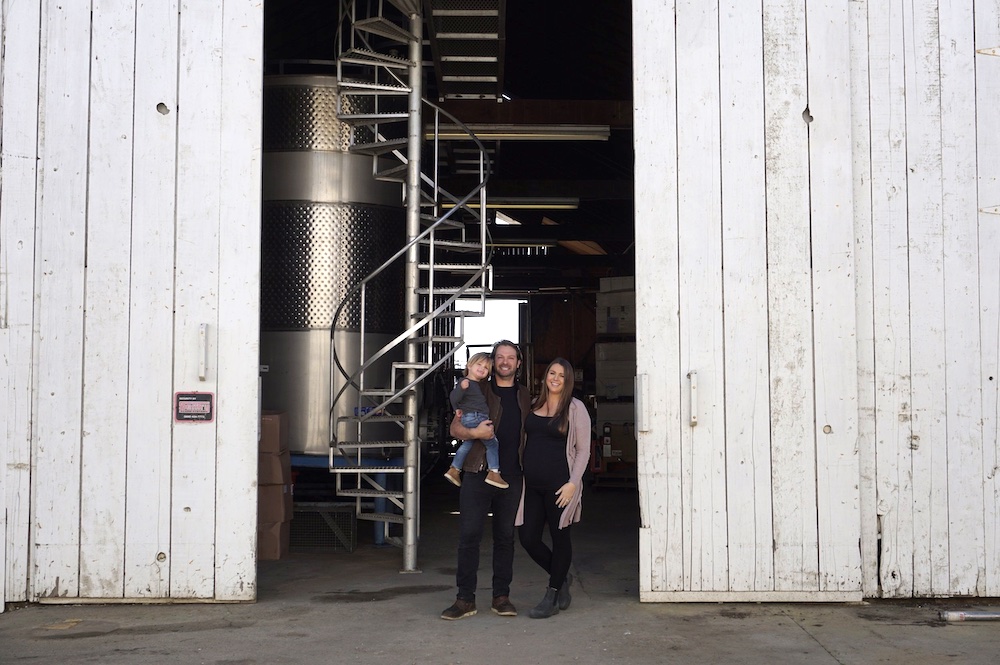
August 1, 2023 – This year we celebrate the founding of the Arroyo Seco AVA—granted status on April 15, 1983—making it one of the earliest to be established of California’s over 100 such designations.
Arroyo Seco is one of the largest planted regions for Chardonnay grapes in the United States and has also bult a reputation for award-winning and coveted Sauvignon Blanc: think J. Lohr, Bernardus, Chesebro, Kori and Wrath for starters.
Arroyo Seco’s premiere producers invite you to join them for a special celebration tasting, Saturday, August 12, from noon to 4pm. Members of the local agriculture industry will be on hand to share stories and toast this legendary AVA at Joyce Wine Company, 38740 Los Coches Road, Soledad. Tickets are $65; designated drivers, $20. Ticket info
Michael Griva is President of the Arroyo Seco Winegrowers Association and owner of F & G Vineyards, LLC. As one of the largest growers here, he has a particularly salient perspective.
“Arroyo Seco is blessed with winegrowers, vintners and landowners who had the vision and knowledge to carve out the AVA—using science, geology, hydrology, and microclimate data,” he says.
“Today, we have a great blend of large wineries, many of which have been here for 40 years or longer, along with newer artisanal wineries. This area continues to attract wineries, proving that the original pioneers picked the right spot, and I believe this will continue in the future.
I’m convinced we will see Chardonnay continue to be one of our showcase varietals, and as Pinot Noir from our region keeps receiving accolades, it will see more media exposure and earn additional notoriety. Another rising star of the Arroyo Seco, the Musqué clone of Sauvignon Blanc, continues to gain in popularity and receives many commendations,” he adds.

Spanning 18,240 acres, the Arroyo Seco AVA is one of the smaller in California: Lodi is 3,008,000 acres, while the Santa Cruz Mountains spans 408,000 acres, the Russian River Valley covers 96,000 acres, and the Santa Maria Valley is over 80,000 acres. It’s even smaller than the Santa Lucia Highlands, at 22,000 acres. There are just over 7k acres of grapes planted in Arroyo Seco.
The region is well defined by the drainage of the Arroyo Seco River, a seasonal creek that channels rainwater and snowmelt from the Santa Lucia Mountains and the Los Padres National Forest to the Salinas Valley.
Lying approximately 40 miles from the deep waters of Monterey Bay, the Eastern and Central portions of the AVA is exposed directly to the Pacific Ocean due to the direct channel for cold moist air provided by the Salinas Valley. Spend any time here and you will experience the dense fog and howling winds averaging 30mph during the growing season. The Western portion of AVA is a narrow gorge that runs east-west and is more sheltered from the Pacific Ocean influences. This portion of terrain experiences warmer daytime temperature along with a larger swing in diurnal temperature. The area, which ranges from 171 ft. to 2,031 ft. above-sea-level, sees little rainfall, garnering around 13 inches/year.
Those who authored the AVA application described the unique terrain that was created over millennia by carving deep canyons, strewing rocks and filling a deep subterranean aquifer with clean, pure water. The terrain is varied, including narrow ravines and gorges, dry riverbeds and valley floors. Its soil types are primarily Arroyo Seco Gravelly Sandy Loam and Chualar Loam.
The earliest plantings of vines within the AVA’s boundaries were made by the Mirassou family in 1961, establishing the area’s first commercial vineyard, Mission Ranch, well over two decades before the region became recognized as an AVA.

Another early pioneer was Jerry Lohr, who planted his first vines in Arroyo Seco 1972, amongst the cool windswept cobbles of Arroyo Seco, where farmers were mostly growing beans and broccoli at the time. Among the vines Lohr planted in 1972 were Riesling and Valdiguié, as he had no real data on what varieties could work well on here. Planting was the ultimate gamble. But it’s paid off handsomely.
Mark Chesebro farms Cedar Lane Vineyard, planted to 56 acres of vines, including both Pinot Noir and a current darling among young winemakers, Gamay Noir. He is grafting Viognier over to Vermentino and Albariño to meet demand.
“I am considering grafting some more Viognier over Tempranillo and Graciano for a Spanish style blend with Grenache,” notes Chesebro, who sells to 7 different wineries currently, down from 15 in the past. “I am currently fully sold out of everything I grow. I am seeing the most demand for Sauvignon Musqué, Gamay Noir, Albariño and Vermentino.”
Michael Griva tells us that he began his now 396-acre operation by installing a foundation plant material vineyard in 1997. “The idea was to have our own nursery and grow our own plants. However, our needs for plant material required us to purchase plants from commercial nurseries. I kept the nursery for 15 years and never sold any of the vines. Instead, I was able to see what varieties and clones worked well in our soil and climate. In 1998, I planted 19 acres of Sauvignon Musqué and 19 acres of Chardonnay for Bernardus Winery. That same year I also planted 40 acres of Chardonnay for J. Lohr Vineyards & Wines.”
His vineyards are contiguous and all are in the Arroyo Seco AVA. The current varietal breakdown is as follows:
Chardonnay – 280 acres
Sauvignon Musqué – 80 acres
White Riesling – 15 acres
Pinot Noir – 8 acres
Pinot Blanc – 7 acres
Syrah – 4 acres
Semillon – 1.5 acres
Griva is looking at replanting some of the oldest Chardonnay vines along with installing additional acreage of Sauvignon Musqué and Chardonnay.
“We were very fortunate to start our vineyard 25 years ago with two great wineries (Bernardus and J. Lohr),” says Griva. “I still work closely with both and I consider both of them partners and family, not only because of the way we do business, but because of the future plans we have and the way we treat each other.
Although most of our vineyards have long term commitments, we keep a small amount of acreage uncommitted so that we can offer smaller artisan winemakers some of our fruit. I believe this is a great way to bring in the next generation. Most, but not all, have roots in Monterey County, such as Luli Wines, Russell Joyce, and Kori Wines. However, some reside outside of Monterey, such as Martin Ranch Winery in the Santa Cruz Mountains and Eden Rift in Hollister.”
Wineries pouring at the 40th Anniversary Celebration include:
Bernardus
Blair Estate
Chesebro
J. Lohr
Joyce Wine Company
Luli Wines
Martin Ranch
Muirwood Wines
Scott Family Wines
Wente
It should be a great day to hear some great stories and taste some new ones being written in this unique AVA where the cobblestones are known as Arroyo Seco potatoes.
About the author
Laura Ness is a longtime wine journalist, columnist and judge who contributes regularly to Edible Monterey Bay, Spirited, WineOh.Tv, Los Gatos Magazine and Wine Industry Network, and a variety of consumer publications. Her passion is telling stories about the intriguing characters who inhabit the fascinating world of wine and food.
- Laura Nesshttps://www.ediblemontereybay.com/author/lness/
- Laura Nesshttps://www.ediblemontereybay.com/author/lness/
- Laura Nesshttps://www.ediblemontereybay.com/author/lness/
- Laura Nesshttps://www.ediblemontereybay.com/author/lness/


